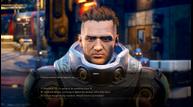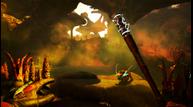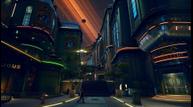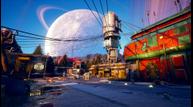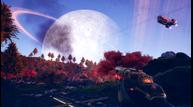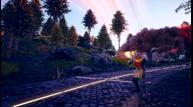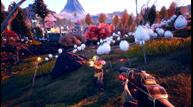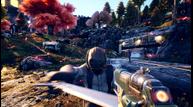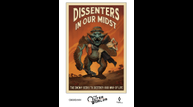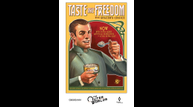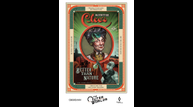
The Outer Worlds Preview: Breaking new ground at the edge of the galaxy
Revealed yesterday during The Game Awards 2018, The Outer Worlds is Obsidian Entertainment's newest single-player first-person RPG. While rumors had persisted that Obsidian's then-unannounced new title was a third-person game in the vein of Mass Effect, the studio revealed yesterday the project is actually entirely first-person, surprising many in a manner not entirely dissimilar to the showcase of gameplay of Cyberpunk 2077 from earlier this year. Helmed by original Fallout creators Tim Cain and Leonard Boyarsky, there are lots of reasons to be excited about the studio's newest IP after several years of working on smaller-scale and often-crowdsourced CRPG titles such as Pillars of Eternity and Tyranny.
RPG Site had the opportunity to visit Obsidian's studio in Irvine, California to get a first-hand look at the development of The Outer Worlds, as well as talk to the developers behind the new spacefaring RPG. What we encountered was an enthusiastic team of developers who, frankly, couldn't wait to show off their new game for the world to see.
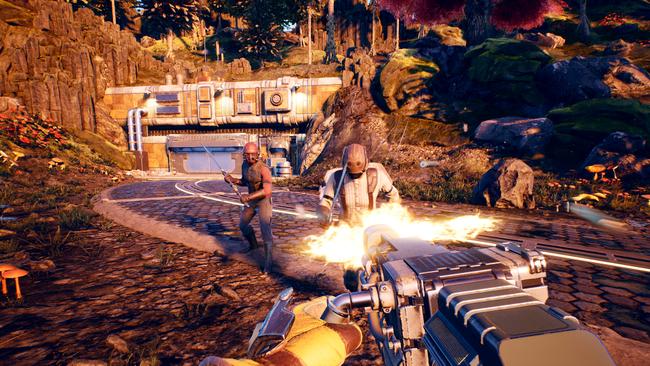
From Fallout to The Outer Worlds - How it came to be
Obsidian Entertainment's roots are well documented -- during the rocky closing of Interplay's Black Isle Studios division and the canceled Baldur's Gate III, Feargus Urquhart, Chris Avellone, and a handful of other ex-employees founded the studio in the wake of their former employer's end. From there, the team went on to develop several critically and commercially acclaimed titles across several IPs over the next 15 years as an independent studio. Microsoft recently acquired Obsidian last month alongside inXile entertainment -- another studio also founded by ex-Interplay developers.
The prequel to the story of The Outer Worlds begins separately from Obsidian's founding, though. In the late 90s, Tim Cain and Leonard Boyarsky left Interplay to found Troika Games and work on titles such as Arcanum: Of Steamworks and Magick Obscura and Vampire: The Masquerade – Bloodlines. After career detours took Cain and Boyarsky to Carbine and Blizzard respectively, the pair found themselves back under the same roof in 2016 at Obsidian. It was then that they approached CTO Chris Jones about working together on a new RPG.
Jones is another alumnus of Interplay and Troika games -- you can see there's a bit of a trend here. Cain had been reenergized after working on Pillars and wanted to have another go at being a game director again, and Boyarsky wanted to have another chance at designing a new world and setting after working on several Diablo projects. Needless to say, everything fell into place and production on The Outer Worlds had begun.
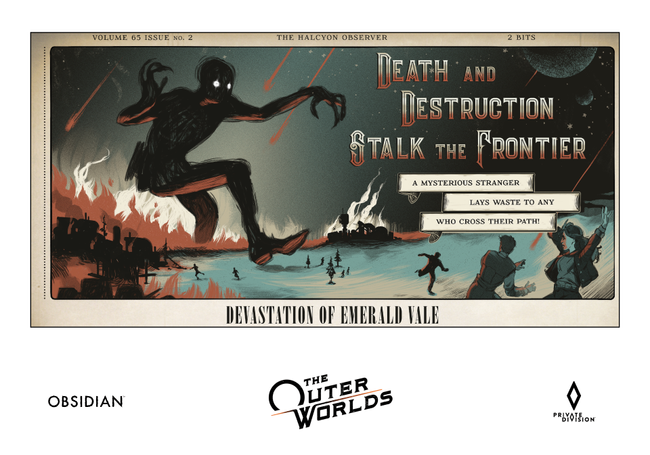
A New Alternate Future Corrupted by Corporate Greed
Our first look at The Outer Worlds matched what the world saw last night, with a look at the player-character waking up from some unknown stasis of sorts and ending up on an Autumnal-styled distant world to the tune of Iggy Pop's 'The Passenger'. Our presentation group was similarly surprised at the reveal of the title's first-person perspective, as well as the striking art direction evoking components of retro-futurism not entirely dissimilar from Bethesda's Fallout titles or something along the lines of Bioshock, though clearly distinct from both. I was skeptical at first, potentially feeling a bit saturated of the general style over the last handful of years, but the unique setting and circumstances of the presented narrative quickly won me over.
The Outer Worlds takes place in an alternate far future -- the Earth has been colonizing distance worlds in the galaxy for about 100 years. The player wakes up after about 70 years of cryosleep at the hands of a wanted scientist near 'the edge of the galaxy' at the colony of Halcyon. The player is told that they were abandoned on a ship full of other settlers that were intended to be some of the first colonists in the area, but obviously, something mysteriously catastrophic happened, causing the plan to ultimately be abandoned and the colonists to remain frozen for decades.
The Doc Brown-resembling figure needs the player's help to rescue the rest of the colonists, but lingering mysteries about Halcyon's enigmatic corporate board leaves questions about the true motive of the player's savior, alongside what happened to the original colony ship several decades ago, and how the colony of Halcyon on Terra 2 ended up becoming such a capitalist dystopia.
Even with this general premise quickly detailed, I found myself already seeking answers to the presented questions: why did this colony ship get abandoned, why was the player selected by this doctor to be awoken, and why is he wanted by the company board? There are enough potential narrative threads present immediately from the outset that I found myself eager to learn more.

Everything in The Outer Worlds is branded by a different company, ranging from gear to weapons to food to the areas people live and work in. Each company in the game essentially has carte blanche to run people's lives. This future society no longer witnesses any degrees of racism or sexism, instead focusing entirely on which company's sphere each person ends up associating with. Halcyon itself is comprised of two Earth-like worlds, aptly named Terra 1 and Terra 2, with the former becoming something of a den of monsters, bandits, and anarchists while the later acted a planet-sized slab of real estate to be bought and companies such as Spacer's Choice and Auntie Cleo's.
It's definitely an interesting twist on a typical dystopian dynamic. The future presented in The Outer Worlds is described as being post-racial at the expense of being occupationally discriminatory to an almost absurd degree. Instead of a faux-utopian society being corrupted by some sort of tyrannical government entity, we instead seemingly have a corporate board playing the role instead. It may end up being functionally identical, but it's an interesting spin on the concept, all the same.
While many other story details were not shared beyond this general premise, we do know that the opening act of the game involves the player gaining access to a spaceship of their own in order to be able to go wherever they want on the colony -- with a few limitations. Completing favors for the colony's various factions, undertaking quests, and even buying passes outright will expand which areas of the colony the player will be able to explore. It definitely seems to play strongly into the core idea that the world should be reactive to the player's decisions, so it's neither a wide-open sandbox nor a linear, guided experience.
Taking Companions to the Next Level, Without Romance
The spaceship, which remained unnamed during our demo, acts as the player's flying home in The Outer Worlds. Companions that are recruited in the game will each take up residence in the ship, and each will even pick up various memorabilia throughout the game to decorate their individual quarters as you complete quests and take them out on expeditions -- the player will get similar opportunities as well for their own residence. While Obsidian wouldn't comment on the final number of companions available in the game, a screen presented during the gameplay demo showcased six silhouettes, with two occupied by Felix and Ellie, the first pair of companions introduced during our preview.
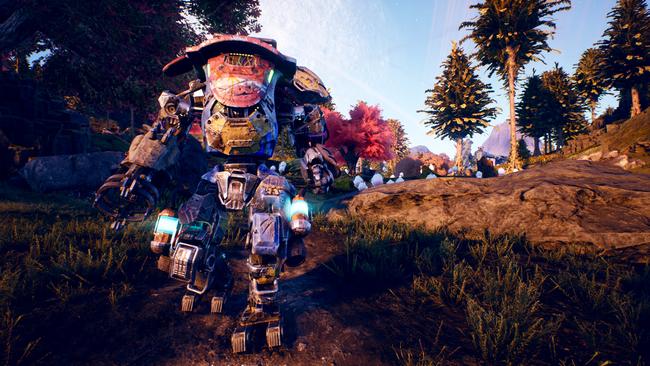
It's honestly hard to not be at least a tad skeptical about the claims of greater companion interactivity -- similar pledges were made for the companions of Deadfire during the CRPG sequel's Fig campaign, only to result in short linear questlines that ended too quickly more often than not, and without a lot of far-reaching consequences. Frankly, most any game with this sort of feature is similarly marketed, so the verdict on how well Obsidian is able to reach this goal of having meaningful narrative interaction from the title's party members will have to wait until we're able to spend more time than what's logistically possible in a preview demo session. Though a few neat ideas were shared to at least show that the potential is there.
While companions join the player pair-wise, there's always the option to go it alone as well. Each ally will bring with them a special set of abilities. These can range from being able to support the player with specific skill checks (not unlike the system present in Pillars of Eternity II: Deadfire) to being able to unleash a powerful combat maneuver at various intervals with increasing effectiveness as the game goes on. While these specific sorts of mechanics are well-worn, the possibility for an increased degree of permanence, starting with the memorabilia for their rooms on board your ship, allows for a potential new layer of decision making when deciding who should accompany whom on any given expedition.
Interestingly enough, it was stated that companions will not be able to be romanced in The Outer Worlds. Boyarsky stated that Obsidian wanted to put their focus and intention on writing deep, fully fleshed out characters without conflating the player's role-playing sensibilities by introducing a sort of minigame where they're encouraged to collect as much party member affection as possible by bending to each character's every whim. It's a reasonable omission to be sure, but one that's also sure to disappoint a portion of the player base that highly values this sort of interactivity. Deadfire had companion romances for every party member and still had characters that felt somewhat flat with thin backstories, so it'll be interesting to see if Obsidian can truly bolster their new RPG on this front with that component removed.
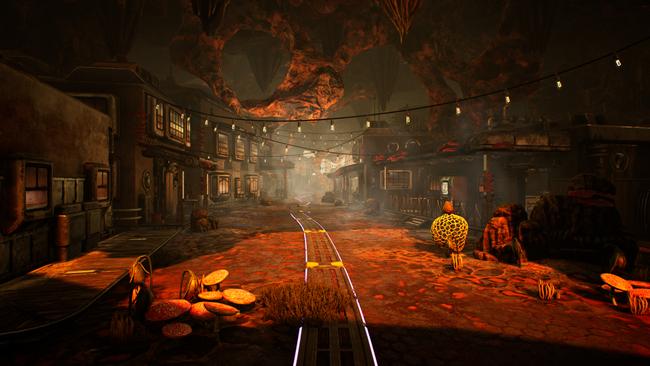
In order to drive home the message that companions were set out as a design focal point upon The Outer World's inception, Tim elaborated on a unique playstyle titled "Leader" to accompany the more standard trio of "Combat", "Stealth", and "Dialogue". A Leader character is one that's clearly differentiated based on the companions he chooses to bring with them but makes concessions to their own individual abilities. Whichever team members they decide to ally with can support and the player's skill levels with their own, and do such to a greater extent depending on how good a Leader the player is.
In this way, a Leader can potentially be highly skilled in multiple ways -- depending on which party members they bring along for the ride.
Combat and Stealth styled characters are pretty self-explanatory, while Dialogue style gameplay consists of trying to avoid physical conflict through lies or intimidation or even by debuffing enemy attributes with certain conversation choices before engaging in an unavoidable combat situation.
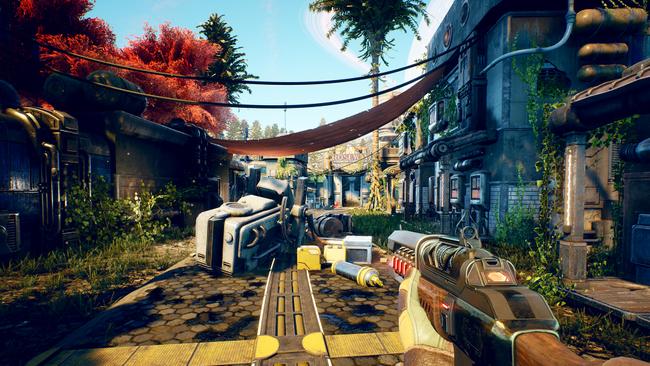
While these four branches of play were initially described as general playstyles, certain aspects of each style are actually hardcoded into The Outer World's skill system, at least to a degree. For instance, the Leader style character will have access to two skills, Inspiration and Determination, which increase your allied companions combat effectiveness and resilience to damage respectively.
There's also, of course, a whole slew of characters outside of the game's bespoke companions. For instance, the previous owner of the player's spaceship had outfitted the craft with an AI named “ADA”. Tim described ADA as being mysteriously unique when compared to other similar computers found in the game, teased as another loose hanging thread that players are encouraged to piece together as they unravel their way through their unique circumstance. Because ADA is effectively the pilot of the ship, this ties into how The Outer Worlds does provide a set of limitations on where the player can travel at any given point in time -- you're only able to land on specific landing pads which you have access to. Access can be earned through completing quests in some cases, or through purchasing expenses passes in others.
Integrating Dark Humor and a Deep Mechanical Core
It was immediately obvious during the demo that The Outer Worlds puts a high focus on telling a tale with a humorous twist. From the opening distress call placing "the unemployed" at the same threat level as "gunfire", to a quest revolving around the production of diet toothpaste, to having explicit [Dumb] options during dialogue where you can play as a complete buffoon if so desired, it's clear that a degree of whimsy has been incorporated into the title's general tone.
It's also evident, however, that this is a tried and true Obsidian RPG at its core, with dialogue options and exploration paths locked behind skill checks, party composition, and previous quest outcomes, at least as it was presented. As for the narrative, Tim and Leonard made it clear that while the player is nudged in certain directions regarding the circumstances of their awakening, options ranging from being the hero to the anti-hero to the complete psychopath are always made possible. The player character is not voiced, so dialogue selections are understood immediately by the game's characters in a matter similar to Fallouts 3 and New Vegas.
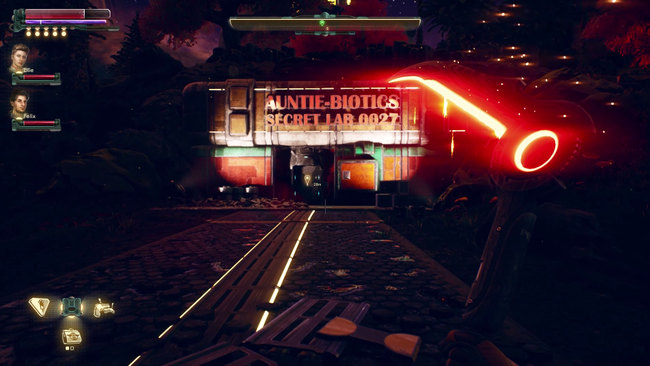
Combat gameplay also seems mechanically dense in a similar way. The Outer Worlds has a strong focus on aligning your character's gear in a way that compliments their skills and abilities. Being proficient in certain skills will also help players outfit their gear to suit their situation. For instance, the three technological skills available, Science, Engineering, and Medicine, will affect the effectiveness of certain gear, or the ability to efficiently modify them.
Tying into this is the game's premise of corporate ownership. Every weapon in The Outer Worlds is owned or manufactured by a specific company -- some are cheap weapons meant to be sold abundantly, others are heavily configurable with specific mods, and others are high-grade weapons with the literal cost of being incredibly expensive. So the theme of heavy corporate branding transcends being purely a narrative component or a way to implement a faction system, but it ties into gear as well, which is admittedly pretty neat. What if you're playing a sort of hero character, but the best gear dangled in front of your face is owned by a bunch of amoral schmucks?
Gating unique equipment behind morally grey questlines or allegiances isn't a new feat, but to go as far as The Outer Worlds seems so is perhaps a bit nuts -- but I think I like it.
Weapon modification examples were also given, such as the ability to change an energy weapon's damage type from plasma to shock in order to make it more effective against robots. For characters with low Engineering ability but high Science, using a specifically suited Science-type weapon such as a shrink ray might be a better choice. This could, hypothetically, pair well with a strong Leader-type character, who could shrink enemies and then use their companions abilities to finish off targets with direct damage.
Flaws: Turning Weaknesses into Strengths
Altogether, it seems that The Outer Worlds' exploration, team composition, combat mechanics, and interesting faction-type system mesh into a unique machine of sorts of components RPG fans should love tinkering with. Specializing in certain abilities, allying with a specific faction associated with a particular gear set, and putting together a sort of build that best implements how a given player wants to approach the game's combat sounds like a uniquely challenging puzzle each player will have to piece together. Furthering this even more is the strange implementation of a system called 'Flaws'. Flaws are effectively a sort of 'anti-Talent', a penalty that one may choose to handicap themselves with in order to gain further ability in another skill area.
For instance, a player that takes a significant amount of damage from a type of creature known as a Raptodon could find themselves eventually able to select the Flaw “Raptophobia”. Players with this Flaw will take penalties for any future encounters with the specific enemy type at the exchange of earning an additional perk point to spend elsewhere. Taking on Flaws is optional, but permanent once decided on, so the hope is that there are certain enemy types or situations that the player knows they could handle even when put at a disadvantage, and then gain a bonus in another area return. Other examples of Flaws were a fear of heights that kick in whenever the player is near a steep drop-off point, as well as fear of the dark. Coupled with a day/night cycle, it's easy to see how certain Flaws could become large potential handicaps.
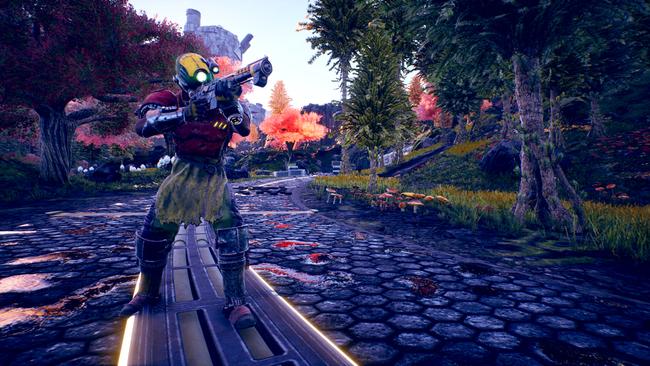
Admittedly, to me the idea behind Flaws didn't come across to me as quite as novel as they were presented -- they fundamentally appear very similar to the sort of traits a player might select at the start of a new Fallout: New Vegas file for instance, where one weighs the benefit and penalty of taking on a specific character attribute, such as increasing critical hit chance at the cost of your weapon condition decay rate. However, the fact that Flaws are presented to the player based on their game experience, such as Raptophobia only being offered to players once they've hit a damage threshold incurred by Raptodon enemies, does provide a unique enough twist on the idea to make it worth headlining to a degree.
Lastly, combat involves a process somewhat akin to a real-time V.A.T.S called 'Tactical Time Dilation'. Not only does this slow down time in a manner typical to several first-person shooters, but it combines this bullet time-style effect with a scan feature that allows the player to see an opponent's health and armor and even their assigned faction. It also allows the player to target particular limbs. In true Obsidian fashion, a narrative reason for the player-character to possess this sort of ability was hinted at, somehow related as a consequence of their extended freezing circumstances as something for the story to eventually reveal.
Underneath The Outer Worlds' familiar shell lies something I haven't seen before
It's honestly difficult for me to decide exactly how to close out a set of preview impressions like this. "I'm looking forward to it" or "I'm excited", seem kind of pointless because, well, of course I am. On the surface, while the art style and gameplay mechanics offer a few interesting twists and wrinkles, it's nothing we haven't seen before. At the same time, though, we know that this is the sort of game Obsidian can do, and do well -- there's a reason that titles like New Vegas and Alpha Protocol are often praised for their reactive narratives and role-playing moxie. Seeing Obsidian return to this style of game after so many years away is reason enough to perk up a bit, but what sticks with me most is the unique setting presented. The Outer Worlds might look like something we've seen before, but when factoring in the general narrative premise, particular sense of humor, and the coupling of story components with core gameplay fundamentals, its apparent that what I've seen so for is not really all the familiar, and that's what excites me the most.
